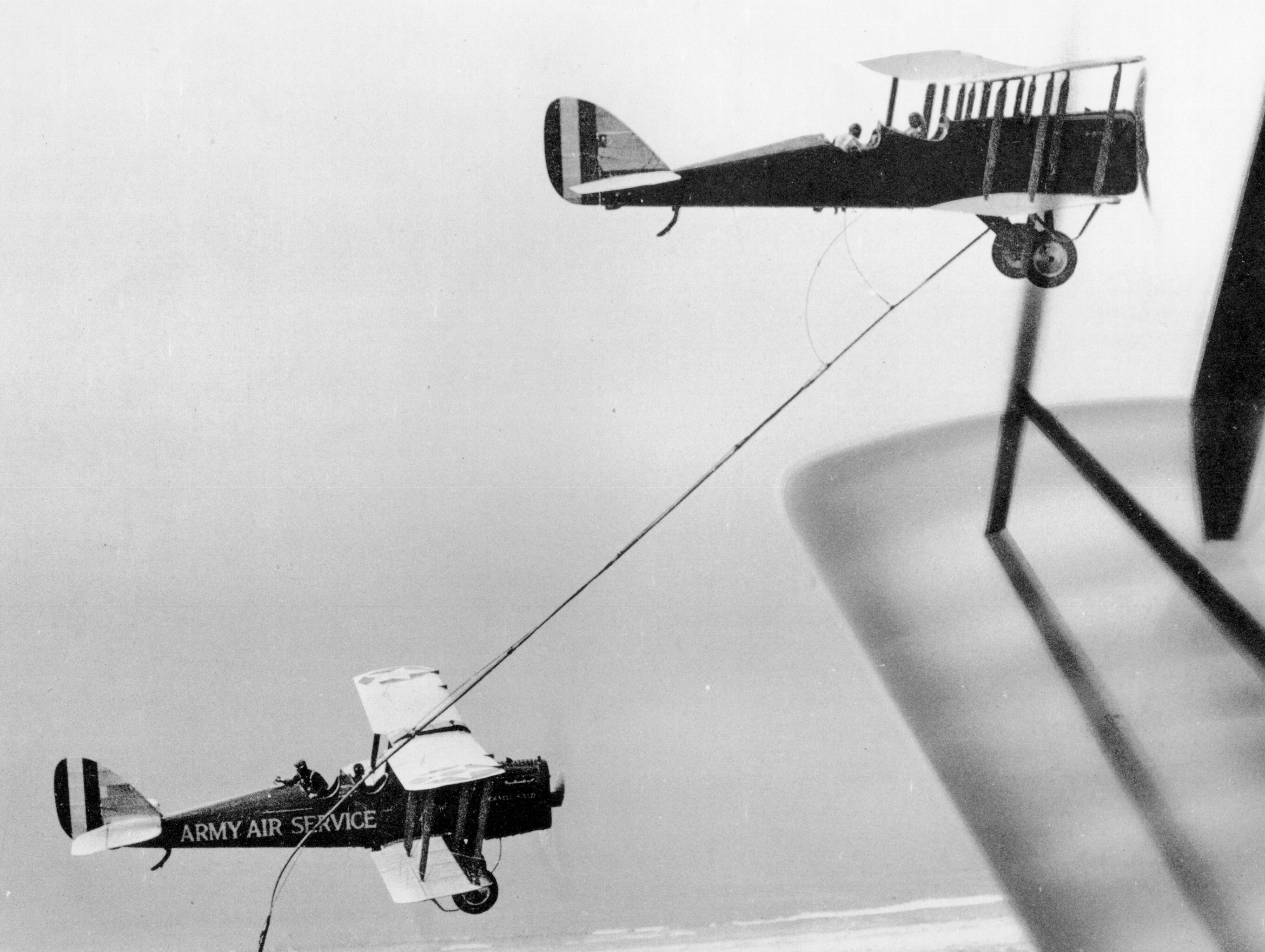In 1923, the U.S. Army undertook tests at Rockwell Field, San Diego, California, to test a more practical way to lower a hose from one airplane to refuel another in flight. In its tests, a DH-4B biplane outfitted as a tanker and equipped with a 50-foot (15-meter) length of hose and a quick-acting shutoff valve would fly above the receiver and lower the hose. The person in the rear seat of the receiver aircraft would grab the hose and connect it to the aircraft. If the hose became detached, the valve would immediately cut off the flow, preventing it from spraying fuel over the receiving aircraft and its pilot.

Crew of the “Question Mark.” From left to right: Maj. Carl Spaatz, Capt. Ira Eaker, Lt. H.A. Halverson, Lt. E.R. Quesado and Sgt. R.W. Hooe. (U.S. Air Force photo)
75 Years of Inflight Refueling, Highlights, 1923-1998
The first flight was made on April 20, 1923. The aircraft remained attached for 40 minutes but intentionally passed no fuel. The equipment was tested over the next several months with numerous fuel transfers. On June 27, the pilots made an attempt on the aircraft flying endurance record. By August 27, using this technique, one of the DH-4Bs established 14 world records with a flight lasting more than 37 hours.
The next day another refueling flight was made in an attempt to break the world record set by Macready and Kelly in the T-2 on Oct. 5, 1922. Unfortunately, a gasoline valve in the receiver airplane became plugged, and Smith had to make a forced landing in some mud flats near North Island after almost a full day in the air. The airplane flipped onto its back on landing, and its propeller was cracked.
Two months later on Aug. 27-28, Smith and Richter made an endurance flight which lasted 37 hours, 15 minutes, with 16 refueling contacts. During this flight, they set 16 new world records for distance, speed and duration. On Oct. 25, 1923, Smith and Richter flew nonstop from the Canadian to the Mexican border, a distance of 1,250 miles, by being refueled three times while in the air. The theory of extending the range of an airplane by mid-air refueling became a demonstrated fact.
On July 19, 1948, the 43rd and 509th Air Refueling Squadrons were activated at Davis-Monthan Air Force Base, Ariz., and Roswell Air Force Base, N.M., in preparation for the assignment of tanker aircraft. These two squadrons were the first air refueling units in the U.S. Air Force. They began receiving tanker aircraft in late 1948. These first tankers were simply B-29s modified to carry and dispense fuel while aloft. Employing the British-developed system of in-flight refueling, that is, the use of trailing hoses and grapnel hooks, these tankers were designated KB-29Ms.


























